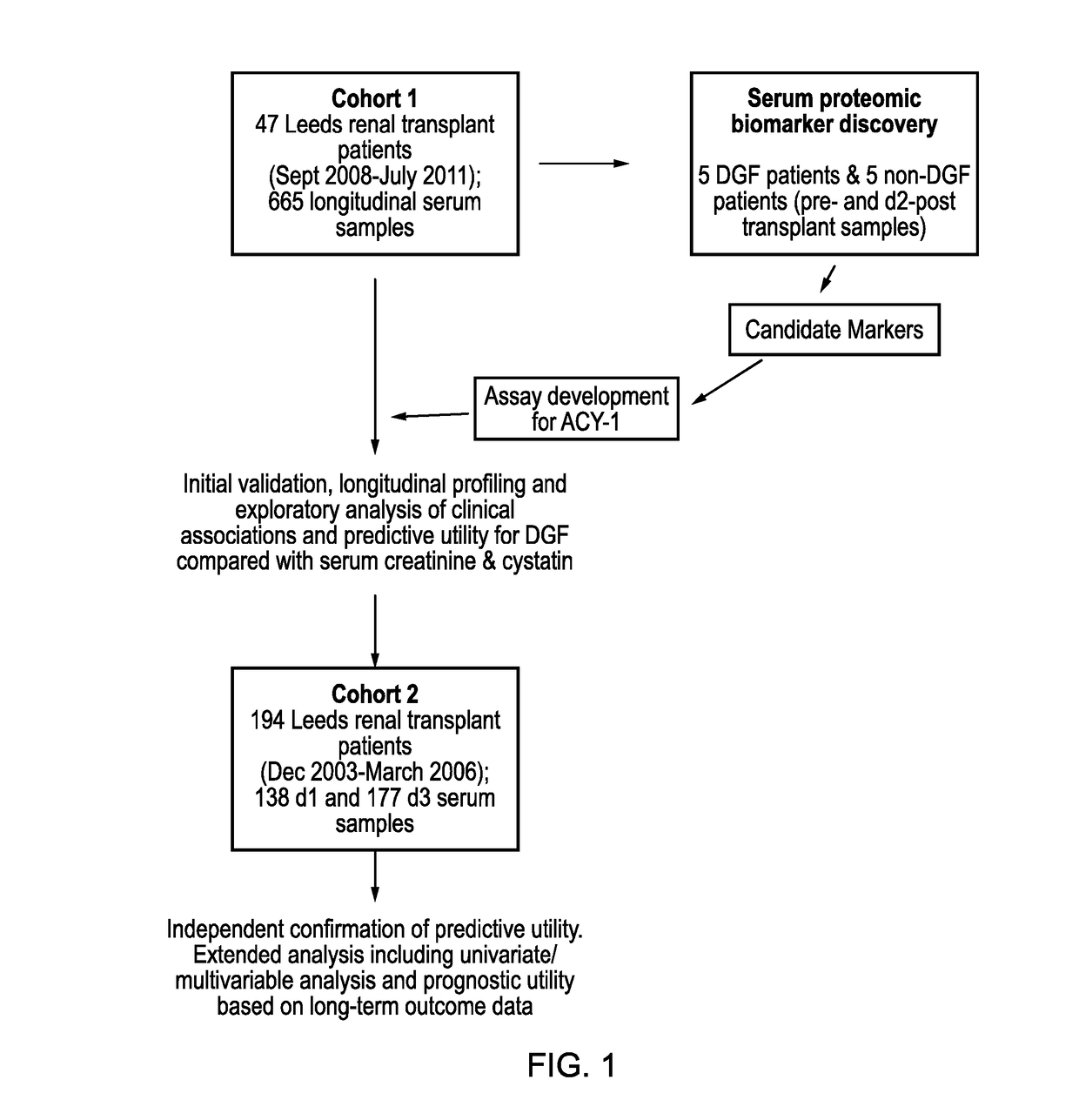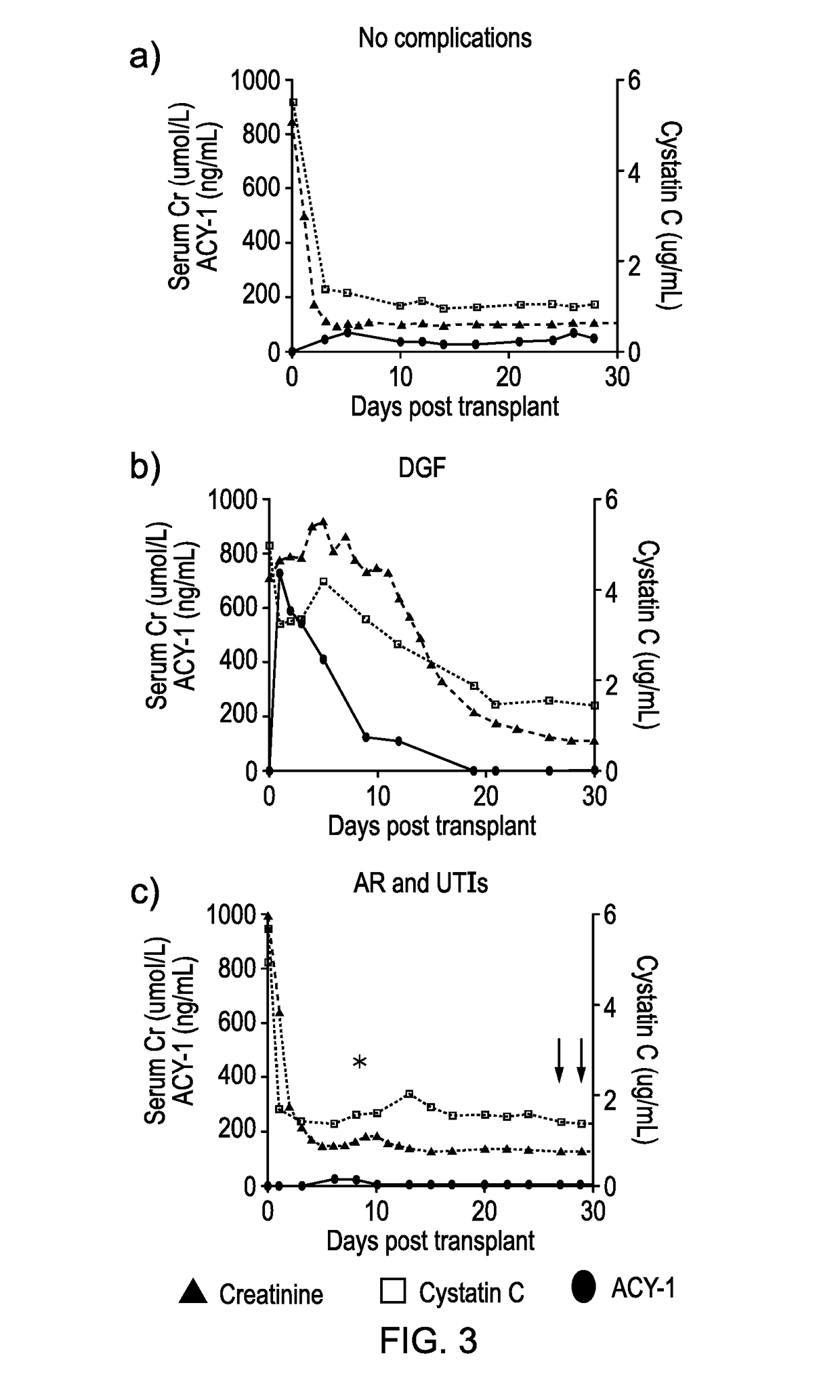Use of ACY-1 as a marker of ischaemia/reperfusion, delayed graft function and graft viability as well as method thereof
a technology of ischaemia/reperfusion and acy1, which is applied in the field of use of acy1 as a marker of ischaemia/reperfusion, delayed graft function and graft viability as well as the method thereof, can solve the problems of difficult discovery of biomarkers with serum or plasma, difficulty in determining whether urine output occurs, and the true ability of discrimination is questionabl
- Summary
- Abstract
- Description
- Claims
- Application Information
AI Technical Summary
Benefits of technology
Problems solved by technology
Method used
Image
Examples
examples
1. Methods
[0140]1.1 Patient Groups and Study Design.
[0141]Patients were consented prior to undergoing renal transplantation (FIG. 1). Venous blood samples were obtained prospectively pre-transplant and longitudinally at least three times a week post-transplant (mean 14 samples / patient). Blood was collected using Z / serum clot-activator tubes (Greiner), allowed to clot for 45 minutes to 2 hours at room temperature before centrifugation at 2000 g at 20° C. for 10 min and serum aliquotted and stored at −80° C. Patient cohort 1 included 55 patients (665 samples; 47 renal transplant patients and 8 live donors), 15 of whom had DGF (based on the definition of needing dialysis in the first week after renal transplantation other than for isolated hyperkalaemia), collected in the period September 2008-July 2011, and cohort 2 included 194 patients (138 with day 1 and 177 with day 3 samples), 55 of whom had DGF, collected in the period December 2003 to March 2006. Initial biomarker discovery was...
PUM
| Property | Measurement | Unit |
|---|---|---|
| concentrations | aaaaa | aaaaa |
| temperature | aaaaa | aaaaa |
| temperature | aaaaa | aaaaa |
Abstract
Description
Claims
Application Information
 Login to View More
Login to View More - R&D
- Intellectual Property
- Life Sciences
- Materials
- Tech Scout
- Unparalleled Data Quality
- Higher Quality Content
- 60% Fewer Hallucinations
Browse by: Latest US Patents, China's latest patents, Technical Efficacy Thesaurus, Application Domain, Technology Topic, Popular Technical Reports.
© 2025 PatSnap. All rights reserved.Legal|Privacy policy|Modern Slavery Act Transparency Statement|Sitemap|About US| Contact US: help@patsnap.com



